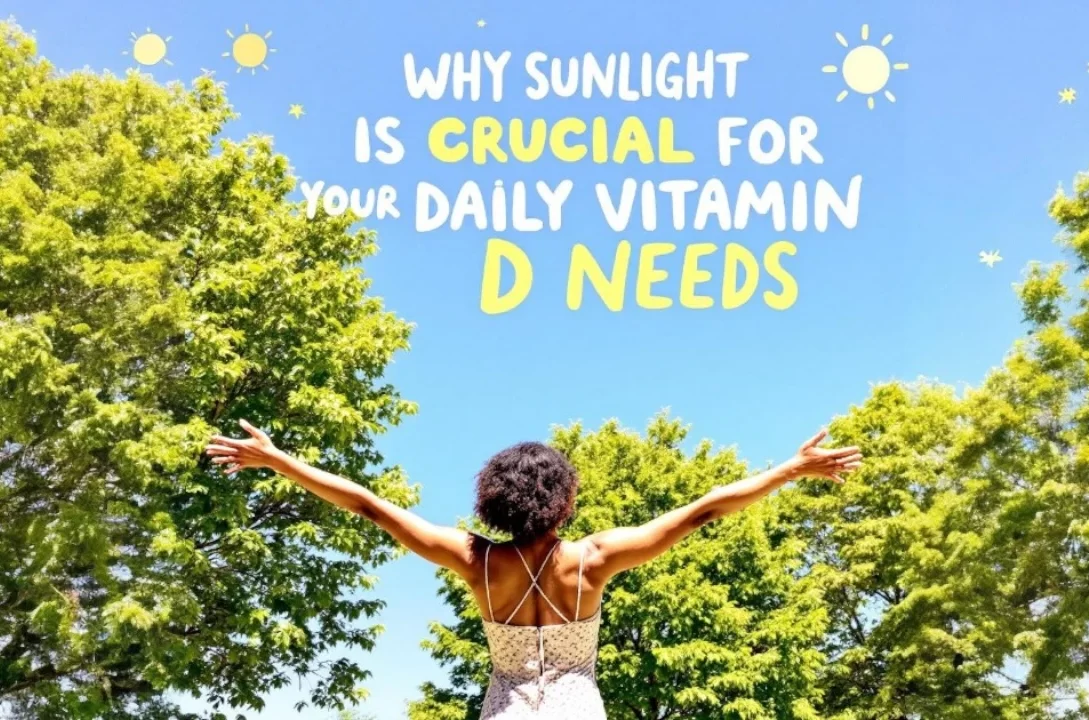Vitamin D, often called the “sunshine vitamin,” is a critical nutrient that supports bone health, immunity, and mood regulation. While you can get vitamin D from food and supplements, sunlight remains the most effective and natural source.
But how much sun do you really need? And what happens if you don’t get enough? In this guide, we’ll explore why sunlight is non-negotiable for your vitamin D levels, how it benefits your body, and the best ways to optimize sun exposure safely.
The Science Behind Sunlight and Vitamin D
How Your Body Produces Vitamin D from Sunlight
When your skin is exposed to UVB rays from sunlight, it triggers a chemical reaction that converts cholesterol in your skin into vitamin D3 (cholecalciferol). This form then travels to your liver and kidneys, where it becomes active vitamin D (calcitriol), ready for use in your body.
Key factors affecting vitamin D production:
- Skin pigmentation (darker skin requires more sun exposure)
- Geographical location (people near the equator produce vitamin D year-round)
- Time of day (midday sun is most effective)
- Season (winter months reduce UVB availability)
Why Supplements and Food Aren’t Enough
While fatty fish, egg yolks, and fortified foods contain vitamin D, they rarely provide enough to meet daily requirements. Supplements help, but they can’t fully replicate the benefits of natural sunlight, which also regulates circadian rhythms and boosts serotonin.
Top Health Benefits of Sun-Derived Vitamin D
1. Strengthens Bone Health
Vitamin D enhances calcium absorption, preventing osteoporosis, rickets (in children), and fractures. Without enough sunlight, your bones weaken over time.
2. Boosts Immune Function
Research shows vitamin D reduces inflammation and fights infections, lowering risks of autoimmune diseases and respiratory illnesses like colds and flu.
3. Enhances Mood and Fights Depression
Low vitamin D is linked to seasonal affective disorder (SAD) and depression. Sunlight increases serotonin, a hormone that improves mood and relaxation.
4. Supports Heart Health
Adequate vitamin D levels help regulate blood pressure and reduce cardiovascular disease risks.
5. May Lower Risk of Chronic Diseases
Studies suggest sunlight exposure may decrease risks of:
- Type 2 diabetes
- Multiple sclerosis
- Certain cancers (breast, colon, prostate)
How Much Sunlight Do You Really Need?
Optimal Sun Exposure Guidelines
- Fair skin: 10–15 minutes of midday sun, 3–4 times per week
- Darker skin: 20–30 minutes (melanin reduces UVB absorption)
- Arms, legs, or back exposed (maximizes vitamin D synthesis)
Note: After this time, apply sunscreen to prevent burns.
Factors That Reduce Vitamin D Production
- Sunscreen over SPF 8 (blocks UVB rays)
- Aging (older skin produces less vitamin D)
- Pollution and cloud cover (reduces UVB penetration)
Risks of Vitamin D Deficiency
Signs You’re Not Getting Enough Sunlight
- Constant fatigue
- Frequent sickness
- Bone or back pain
- Slow wound healing
- Hair loss
Who’s at Higher Risk?
- Office workers (indoor lifestyles)
- Elderly individuals
- People in northern latitudes
- Those with darker skin tones
Balancing Sun Exposure and Skin Safety
How to Get Vitamin D Without Burning
- Expose skin gradually—start with short sessions.
- Avoid peak UV hours (10 AM–4 PM) if prone to burns.
- Wear a hat & sunglasses to protect your face and eyes.
When to Use Sunscreen
After getting your daily vitamin D dose (10–30 minutes), apply broad-spectrum SPF 30+ to prevent skin damage.
Vitamin D Supplements vs. Sunlight: Which Is Better?
| Factor | Sunlight | Supplements |
|---|---|---|
| Absorption | More efficient | Varies by individual |
| Mood benefits | Yes (serotonin boost) | No |
| Risk of excess | Self-regulated | Possible overdose |
| Cost | Free | Ongoing expense |
Best approach: Combine moderate sunlight with supplements in winter or if deficient.
FAQs About Sunlight and Vitamin D
1. Can you get vitamin D through a window?
No—glass blocks UVB rays, preventing vitamin D synthesis.
2. Does sunscreen completely stop vitamin D production?
High SPF reduces it, but short exposure before applying still helps.
3. Can you get enough vitamin D in the winter?
In northern regions, winter sunlight lacks UVB—supplements are often needed.
4. How long does vitamin D from sunlight last in the body?
Vitamin D is fat-soluble and can be stored for weeks to months.
5. Can vitamin D deficiency cause weight gain?
Some studies link low vitamin D to slower metabolism and weight struggles.
Conclusion: Embrace the Sun Wisely
Sunlight isn’t just about vitamin D—it’s a natural mood enhancer, immune booster, and vital health regulator. While supplements have their place, nothing replaces the power of safe, mindful sun exposure.
Action steps:
✅ Spend 10–30 minutes in the sun daily (depending on skin tone).
✅ Get tested if you suspect a deficiency.
✅ Combine sunlight with vitamin D-rich foods (salmon, mushrooms, fortified milk).
By making sunlight a regular part of your routine, you’ll support stronger bones, a happier mind, and a healthier life.
Need more insights? Check out these trusted sources:
Now, step outside and let the sunshine work its magic—your body will thank you! ☀️











